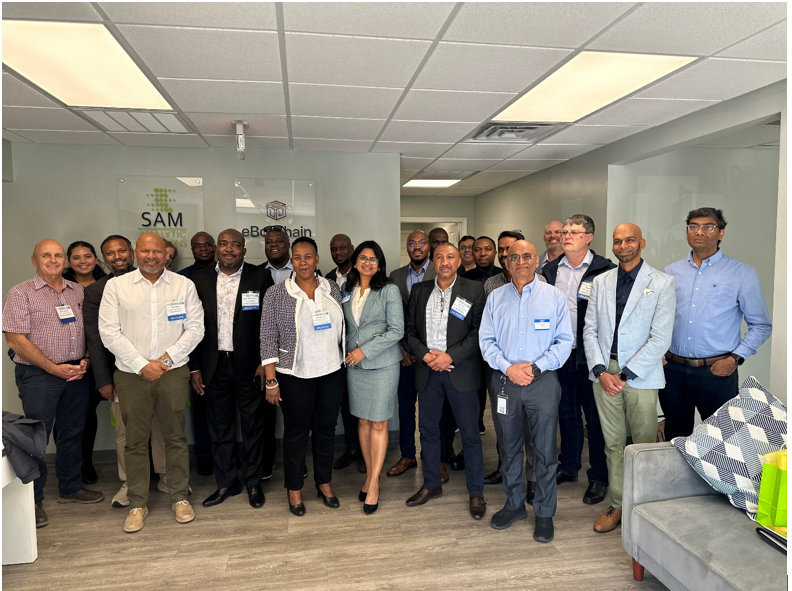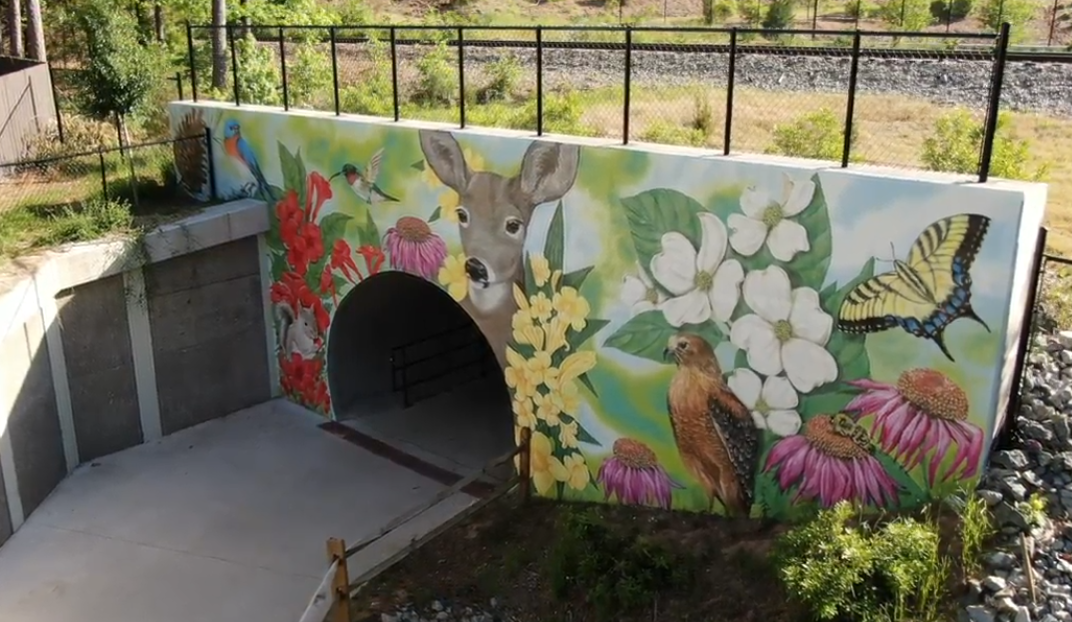On October 21st, Varidx had the pleasure of welcoming a South African trade delegation to their Durham office. The visit, part of a Municipal Energy Reverse Trade Mission facilitated by the United States Trade and Development Agency (USTDA), brought together 13 delegates from various South African municipalities, alongside six USTDA members. The delegation shared critical challenges facing their regional power stations, including issues such as vandalism, theft, and extreme temperatures. It was an engaging and collaborative atmosphere as the Varidx team introduced innovative solutions designed to address these challenges—some of which are already being successfully implemented in domestic power stations. Among the many advanced solutions showcased, the water level sensor system was particularly well-received by the Johannesburg delegates. With numerous streams in the area prone to flooding and pollution, the smart sensor technology sparked interest due to its potential to monitor water levels and mitigate environmental risks effectively. The event was not only a fantastic opportunity to share knowledge but also to demonstrate Varidx’s and SAM Analytic Solutions’ commitment to energy innovation. The teams presented a range of advanced offerings, including AI-based Smart Monitoring, SCADA systems, Smart Surveillance, and Industrial IoT technologies, all aimed at helping municipalities manage energy more efficiently. These tools are engineered for both self-generation of power and for collaboration with Independent Power Producers (IPPs). Looking ahead, Varidx is excited about the possibilities for future collaborations with South African municipalities to develop smarter, more sustainable energy infrastructures that address their unique needs. Together, we can build a more resilient, efficient, and innovative energy landscape.
A fireside chat with mastermind behind the White Oak Trail In Cary. Please meet Paul Kuhn. He is a capital program manager and has worked for Town of Cary for last 20 years. Paul is a licensed landscape architect and started his career with Parks and Rec Department as a parks planner. Over the last 20 years, his role has evolved but always been connected to trails, greenways and parks. Varidx team was present at one of Paul’s impressive presentations on the story behind building of White Oak trail. The vision, budget, implementation and most importantly buy in from the residents. Paul enjoys his vison come to life, when he sees families enjying the trails and facilities. Most of the time, his imagination comes ture but sometimes it is not exactly what he thought will happen. But the net positive is what makes the job fun. The vision for White Oak trail started back in 1988.Cary did its one of probably its first parks master plan and it also include greenways and they even at that point they were looking at how can they have off road trails that will connect destinations in Cary. Cary is a planned community fortunately. So all the growth that’s happened, we’ve been able to kind of be a little bit ahead of that and say, OK, here’s the type of growth we’re looking for and where where the growth should occur and the type of amenities that the public would like. And so when we do these big master plans, we always have a public kind of input component of it and that that’s buried over the years. Typically, we’ll do surveys, we’ll have public meetings, just kind of show them early ideas and then come back and say, OK, here’s what we think we heard and have them kind of confirm that. And so all the planning we do, and Cary kind of follows that process of reaching out to the public and trying to weigh in on what they want to see and where they want to go and what they want to do. And then that sets staff up to go, OK, here’s a specific project. Big Projects are ambitious and then comes the funding question. So definitely you’ve got your big plan, you got your big vision and then you in a certain sense you kind of where is the the money, where, where can you do projects that will fill, fill those gaps. Collaboration and partnership is very helpful in this arena. Regional connections with Morrisville and Apex on American Tobacco trail are examples of these partnerships. Buy in from residents are a big component of the funding as they help approve the bond funding.Then in case of this project, we had to do a bond referendum and you had to get the support to move forward with the funding. And then we leveraged that bond funding and went after grants and we’re able to kind of complete the project because we had that initial support from the public. When, when we did the 2012 bond referendum, we identified a couple projects and White Oak was one of the projects that we said if, if the bond’s approved, this is one of the projects that the money would go towards in order to do that. And we’re very fortunate being in in Cary where where there has been growth and a fairly supportive community to do these quality of life items of parks and greenways. Maintenance is a big componenet of ongoing service. Cary has multiple departments and we work very closely with our public works department, which has around 100 people doing maintenance in our parks and greenways and fire stations and town hall.
A smart city is an urban area or community that utilizes various sensors and electronic methods to collect and analyze data, enabling efficient management of a wide range of city services and operations. One key component of smart city solutions is the unified dashboard, a centralized platform that integrates data from various sources, providing city managers with real-time insights and facilitating informed decision-making. Insights gained from this data are used to enhance urban living, optimize operations, and promote sustainability. Integrating information and communication technology (ICT) and IoT (Internet of Things), networks is crucial in optimizing operational efficiency and empowering citizens with real-time information in the Smart Cities concept. By leveraging these technologies, city officials can directly interact with the community and monitor city infrastructure in real time. ICT and IoT solutions improve urban services’ quality, performance, and interactivity while reducing costs and resource consumption. Smart Cities applications are designed to effectively manage urban flows and deliver timely responses to community needs and challenges. Smart cities leverage advanced technologies and data-driven approaches to enhance various aspects of urban living, including transportation, energy management, public safety, and overall quality of life. The rapid urbanization and population growth in cities present significant resource management, infrastructure, and service delivery challenges. To tackle these challenges, smart cities embrace cutting-edge technologies and data-driven approaches to optimize urban operations and enhance resident well-being. Advantages for City Managers: Enhanced Efficiency: Smart cities employ Internet of Things (IoT) devices, sensors, and real-time data collection to monitor and manage various aspects of urban infrastructure. This enables city managers to streamline operations, automate processes, and optimize resource allocation, improving efficiency and cost savings. Data-Informed Decision-Making: With an abundance of real-time data available, city managers can make informed decisions regarding resource allocation, infrastructure planning, and service delivery. This data-driven approach facilitates proactive problem-solving and enables city managers to respond swiftly to emerging issues. Improved Sustainability: Smart cities prioritize sustainability by optimizing energy consumption, waste management, and transportation systems. City managers can implement smart grids, renewable energy sources, intelligent traffic management systems, and efficient waste management strategies to reduce environmental impact and promote a greener urban environment. Advantages for Residents: Improved Transportation: Smart cities leverage intelligent transportation systems to optimize traffic flow, reduce congestion, and enhance public transportation networks. Residents benefit from real-time traffic updates, optimized routes, and efficient public transportation options, reducing travel time and improving commuting experiences. Enhanced Safety and Security: Smart cities employ advanced surveillance systems, real-time monitoring, and predictive analytics to improve public safety. Integrated emergency response systems enable faster response times, while smart surveillance helps in crime prevention and detection. Residents can feel safer and more secure in their urban environment. Citizen Engagement and Participation: Smart cities encourage citizen engagement through digital platforms and smart governance initiatives. Residents can actively participate in decision-making processes, provide feedback, and access various e-services conveniently. This fosters a sense of community and empowers residents to contribute to the development of their city. Conclusion: City managers can leverage advanced technologies and data-driven approaches to optimize operations, make informed decisions, and enhance sustainability. On the other hand, residents benefit from improved infrastructure, increased convenience, enhanced safety, and active participation in shaping their urban environment. By embracing smart city solutions, urban areas can become more efficient, livable, and sustainable for all stakeholders.



